Should You Use AI Voice Bots for Customer Service
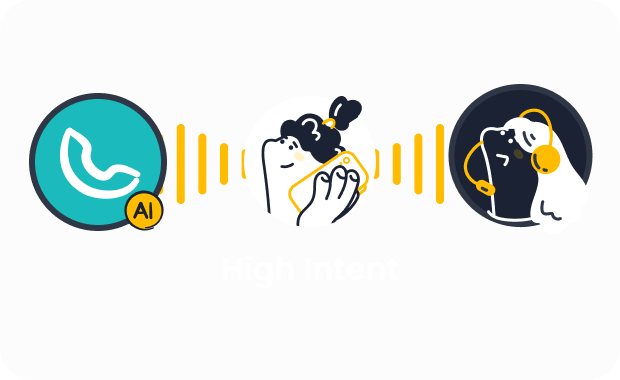
Is your customer service team struggling to keep up with high call volumes and rising customer expectations? AI voice bots now play a major role in transforming customer support. The market for AI agents grew from $3.7 billion in 2023 and is expected to reach $103.6 billion by 2032. By 2025, 80% of companies plan to use AI-powered chatbots for customer service. Companies like Sobot use AI to help customers get fast, efficient, and personalized service at any time. Sobot AI solutions show that AI can boost customer satisfaction while making customer service more efficient. Every business should consider its own goals and readiness for AI before making the switch.
AI Voice Bots in Customer Service
What Are AI Voice Bots
AI voice bots are advanced digital assistants that use artificial intelligence to interact with people through spoken language. These bots use deep learning models, such as neural networks, to turn text into speech that sounds human. They can understand different accents, tones, and even emotions. Cloud-based voice AI technologies make it easy for businesses to scale their customer service without needing extra hardware. This technology helps companies offer 24/7 support, quick answers, and personalized experiences. The market for AI voice bots is growing fast, with a projected compound annual growth rate (CAGR) of 37.1% from 2024 to 2030. Key players in this field include IBM, NVIDIA, OpenAI, Meta, Microsoft, Google, AWS, and others. Businesses use AI voice bots in many areas, such as audio dubbing, translation, and customer support.
| Aspect | Details |
|---|---|
| Technical Definition | AI voice generators use deep learning to create human-like speech, copying accents and intonations. |
| Underlying Models | GANs, VAEs, Transformer-based models (SpeechBERT, Wave2Vec, WaveNet) |
| Dataset Preparation | Uses high-quality audio samples, noise reduction, and normalization |
| Key Applications | Speech synthesis, voice conversion, dubbing, translation, customer service |
| Market Growth | CAGR of 37.1% (2024-2030) |
| Key Market Players | IBM, NVIDIA, OpenAI, Meta, Microsoft, Google, AWS, Cisco, SoundHound, Speechify, ElevenLabs, etc. |
How AI Voice Bots Work
AI voice bots work by combining several advanced technologies. Natural Language Processing (NLP) helps the bot understand what the customer says and what they mean. Text-to-Speech (TTS) technology lets the bot reply in a natural, human-like voice. These bots can manage long conversations, keep the right tone, and even protect private information by hiding sensitive data. For example, some bots can answer in over 45 languages and keep the brand’s voice consistent across cultures. Fast response times, like 20 seconds or less, help keep customers happy. High system uptime ensures that customer service stays reliable.
| Metric Category | Description | Real-World Example / Impact |
|---|---|---|
| Multi-language Accuracy | Keeps meaning clear in 45+ languages | Handles complex multilingual support |
| Tone Consistency Score | Maintains proper tone across cultures | Avoids misunderstandings |
| Brand Voice Consistency | Keeps brand voice steady worldwide | Ensures a unified customer experience |
| PII Protection | Hides sensitive data in real time | Protects customer privacy |
| Average Response Time | Measures how fast bots reply | Klarna achieves 20-second response times |
| System Uptime | Ensures bots are always available | Critical for customer service reliability |
Sobot Voicebot Overview
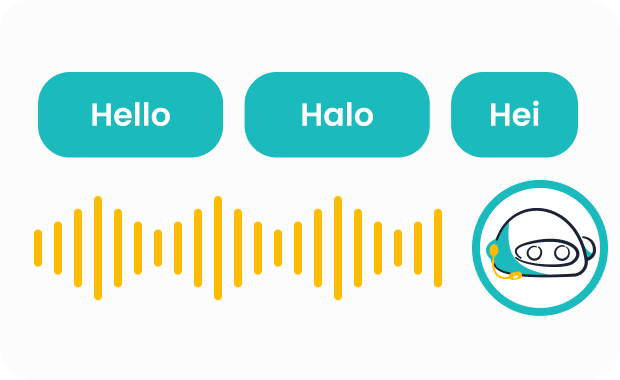
Sobot Voicebot stands out as a leading solution for AI in customer service. It uses advanced speech recognition and NLP to understand and respond to customers in multiple languages. Sobot Voicebot automates over 90% of customer interactions, which helps companies save costs and improve efficiency. The system offers a no-code setup, making integration with existing systems simple. Sobot Voicebot supports both inbound and outbound calls, and it can switch to a human agent when needed. Real-world results show strong performance. For example, Weee! improved agent efficiency by 20% and cut resolution time by 50% after using Sobot. Other brands like OPPO and J&T Express also saw higher customer satisfaction and better service outcomes.
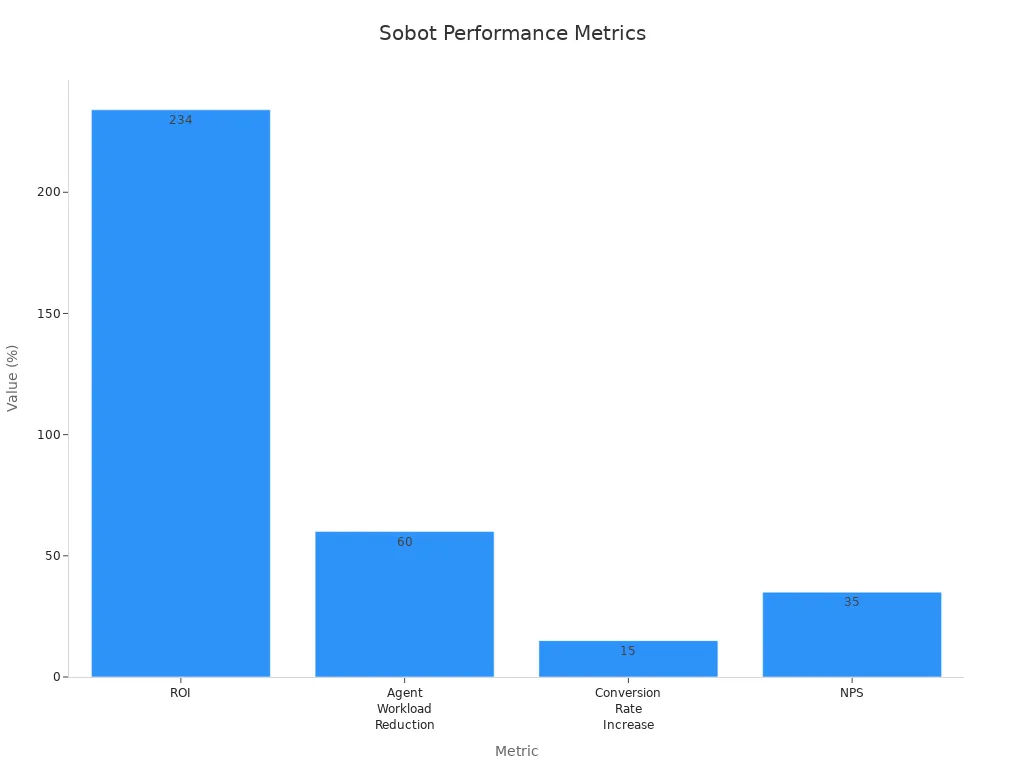
Sobot Voicebot helps businesses deliver fast, reliable, and personalized customer support, making it a top choice for companies looking to improve their ai-powered customer service.
Benefits of Voice AI Customer Service
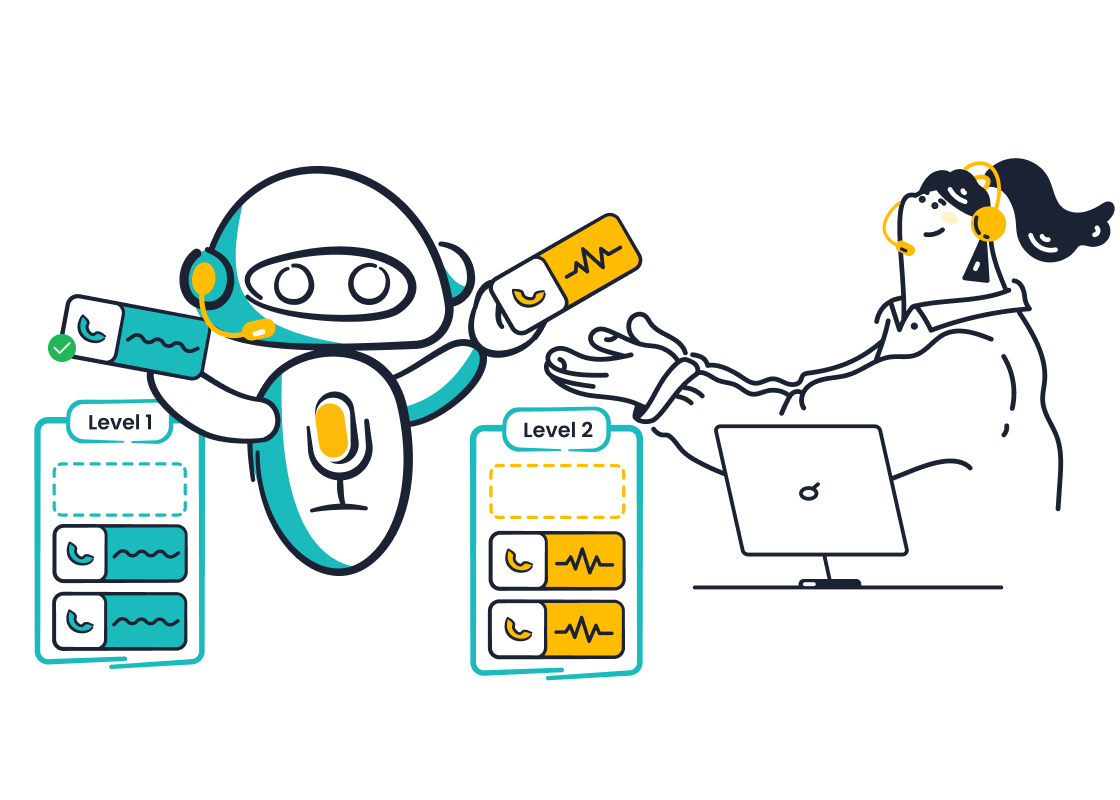
24/7 Support
Voice ai customer service gives companies the power to help customers any time, day or night. Unlike human agents, ai voice bots never need breaks or sleep. This means customers can get answers and support whenever they need it, even on weekends or holidays. Sobot Voicebot uses automation to handle calls around the clock, making sure no customer waits for help.
| Metric / Case Study Aspect | Quantitative Evidence / Result |
|---|---|
| Cost Efficiency | Operating at 50% of the cost of a full-time employee (Atos) |
| Workload Handling Capacity | Equivalent to 50-95 full-time agents (Atos) |
| Man-hour Savings | 600 hours saved per month (Everise) |
| Call Resolution Rate | 15-65% of calls fully resolved without human intervention |
| Wait Time Reduction | 100% reduction in call wait time (from 5-6 minutes to zero) |
| Availability | 24/7/365 support with no downtime |
| Scalability | Can handle unlimited simultaneous calls |
| Agent Call Volume Reduction | 30% reduction in human agent call volumes (Atos) |
These numbers show that voice ai customer service can handle high call volumes, reduce wait times to zero, and save hundreds of hours each month. Sobot Voicebot’s always-on support leads to higher customer satisfaction and a better customer experience.
Cost Savings and Efficiency
Companies see big savings and enhanced efficiency when they use ai-powered customer service. Automating repetitive tasks means fewer agents are needed for simple questions, so teams can focus on complex issues. Sobot Voicebot helps businesses cut costs while improving operational efficiency.
- 20% reduction in handle times leads to $150,000 in annual labor savings.
- 15% reduction in agent turnover costs.
- A 7-point increase in Net Promoter Score (NPS) can boost revenue by 1%.
- Maintaining a Customer Satisfaction Score (CSAT) above 80% keeps churn rates under 7%.
- A 10-point improvement in Customer Effort Score (CES) can save up to $1 million each year.
- Up to 30% reduction in average call handling time.
- 25% increase in operational efficiency.
- Automation reduces staffing costs and enables 24/7 support.
- Workforce productivity improves as agents focus on advanced personalization and problem-solving.
Sobot Voicebot automates over 90% of customer interactions, which means companies can achieve cost-effectiveness for businesses and deliver faster response times. This leads to consistent and accurate responses, higher customer satisfaction, and better retention.
Multilingual and Scalable Solutions
Voice ai customer service supports customers from different countries and backgrounds. Sobot Voicebot offers multilingual support, so customers can speak in their own language and still get help. This makes personalizing the customer experience easier and helps companies reach new markets without hiring more staff.
| Metric/Feature | Data/Description |
|---|---|
| Language Coverage | Supports 80+ languages and dialects |
| Cost Reduction | Up to 40% cost savings |
| Query Handling | Handles up to 90% of queries autonomously |
| Time to Launch New Language Line | Days (not quarters) |
| Platform Integration | Bundled telephony, ASR/TTS, LLM dialogue, analytics, and hand-off logic reduce integration time |
Virtual agents can handle many calls at once, so companies can scale up during busy times. Real-time language detection and natural accents make every conversation feel authentic. Sobot Voicebot’s automation and advanced ai features help companies deliver a seamless, global customer service experience.
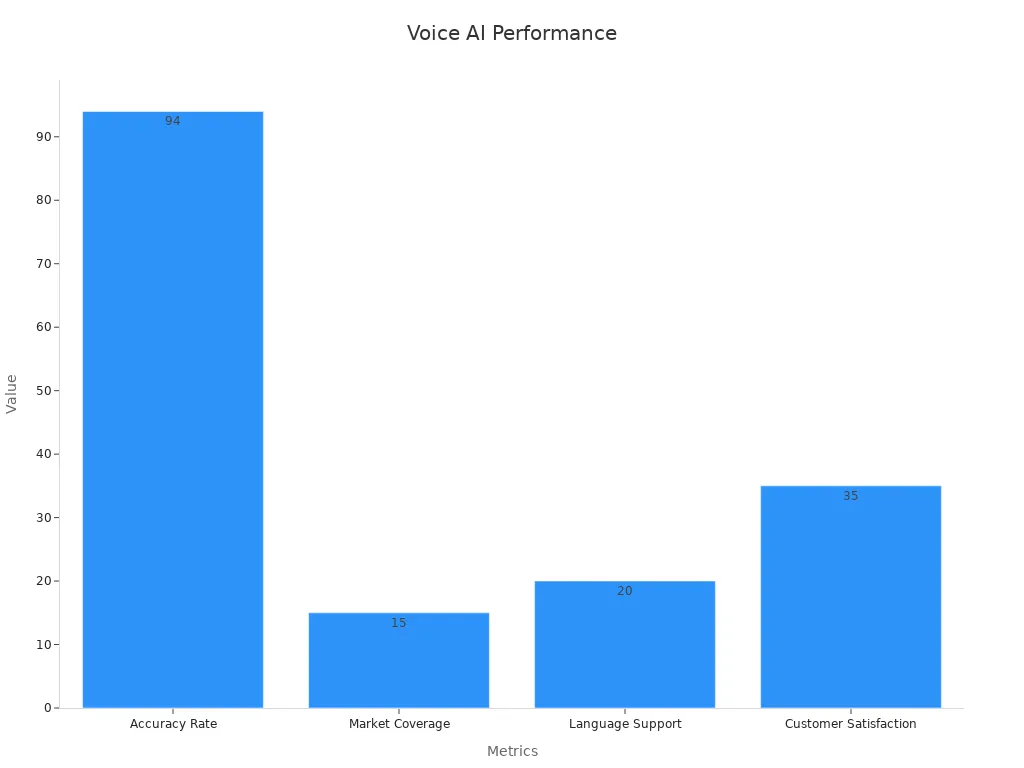
Real-World Results with Sobot
Sobot Voicebot delivers real results for companies in many industries. For example, Weee!, America’s largest online Asian supermarket, used Sobot to solve language barriers and automate repetitive tasks. After switching to Sobot, Weee! saw a 20% increase in agent efficiency, a 50% reduction in resolution time, and a customer satisfaction score of 96%. These improvements show how ai-powered customer service can transform operations.
| Company | AI Tool Type | Key Outcomes |
|---|---|---|
| Weee! | Sobot Voicebot | 20% increase in agent efficiency; 50% reduction in resolution time; 96% customer satisfaction |
| Motel Rocks | AI Chatbots | 43% reduction in ticket volume; 9.44% increase in customer satisfaction |
| Camping World | AI Voice Agents | 33-second reduction in average wait time; 33% increase in agent efficiency |
| Telstra | AI Agent Assist Tools | 20% reduction in follow-up calls; improved agent effectiveness |
Sobot Voicebot uses automation, multilingual support, and seamless integration to improve customer satisfaction and operational efficiency. Customers report better experiences, faster response times, and higher loyalty. Sobot’s ai solutions help companies achieve enhanced efficiency and advanced personalization, making every customer interaction count.
Challenges of AI in Customer Service
Emotional Intelligence Limits
AI voice bots have made big advances in customer service, but they still face important challenges with emotional intelligence. These systems can process large amounts of data and spot patterns in how people talk or feel. However, they cannot fully understand the subtle feelings behind a customer's words. This limitation becomes clear in sensitive areas, such as mental health support, where a lack of human empathy can affect the quality of service.
- Emotional data is hard to label, making it tough for AI to learn true emotions.
- Datasets often have biases, which can lead to mistakes in how AI responds.
- AI may do well in tests but struggle in real conversations with customers.
- People have different ways of showing feelings, so AI finds it hard to measure real empathy.
- Some users may form emotional bonds with AI, raising ethical concerns.
Note: AI in customer service works best for routine tasks. When customers need comfort or understanding, human agents still provide better support.
Data Privacy and Security
Data privacy and security remain top challenges for AI in customer service. AI systems often need personal data to help customers, which raises concerns about how this data is used and protected. Many organizations follow strict rules, such as GDPR, CCPA, and ISO 27001, to keep customer information safe. They also train employees and use automation tools to meet these standards.
- AI in customer service must follow laws like GDPR, CCPA, and LGPD.
- Unauthorized data use and hidden tracking methods can put customer privacy at risk.
- Biometric data, such as voice or face, is sensitive and needs strong protection.
- Lack of clear consent and transparency can lead to legal trouble.
- High-profile data breaches show that personal information can be at risk if not handled properly.
Sobot takes privacy seriously by following global standards and using secure systems. The company helps businesses protect customer data while delivering reliable service.
Handling Complex Issues
AI voice bots handle simple questions well, but they face challenges with complex customer issues. Many bots can solve routine problems quickly, but they often need help from human agents for more difficult cases. Studies show that AI voice bots resolve 15–65% of calls, depending on the situation. For complex travel questions, one AI assistant could only solve 15% of cases on its own.
| Metric | AI Voice Bots Performance | Human Performance |
|---|---|---|
| Call Resolution Rate | 15–65% of calls fully resolved | Higher resolution, especially for complex issues |
| Complex Problem Solving | Improving but still limited for complex issues | Superior for nuanced, unprecedented, and complex problems |
| Emotional Intelligence | 47% of customers find AI empathetic | Superior at detecting subtle emotional cues and unusual situations |
Sobot Voicebot offers seamless handoffs to human agents when needed. This hybrid approach ensures customers get the right help, even when AI reaches its technical limitations.
AI Voice Bots vs Human Agents
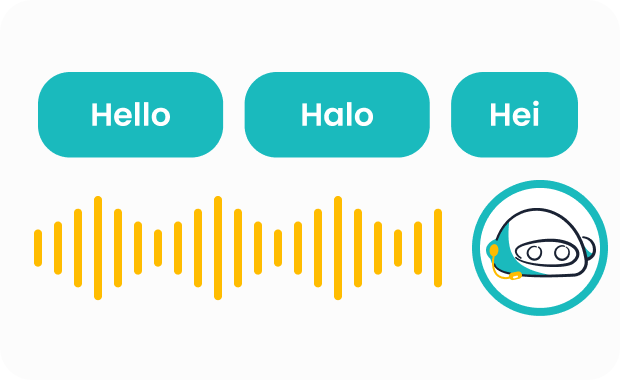
Strengths of AI Voice Bots
AI voice bots bring many advantages of ai to customer service. They handle high call volumes without extra staff. These bots work 24/7, so customers always get support. AI voice bots also give quick and consistent answers to routine questions. Companies save money because the cost per minute is much lower than with human agents. Sobot Voicebot, for example, can manage unlimited calls at once and keep quality high. This makes it easy for businesses to scale their service during busy times.
| Metric | AI Voice Bots | Human Agents |
|---|---|---|
| Cost per minute | $0.09 - $0.29 | $0.42 - $1.08 |
| Cost Savings | Up to 30% lower customer support costs | N/A |
| Scalability | Unlimited simultaneous calls without quality loss | Limited by staffing and shift planning |
| Availability | 24/7 operation | Limited by shifts and working hours |
| Response Time | Quick and consistent answers to routine questions | Slower, varies by agent and workload |
| Consistency | High consistency in responses | Variable, depends on individual agent |
AI voice bots help companies deliver fast, reliable, and cost-effective customer service for routine tasks.
When Human Agents Excel
Human agents play a key role in customer service, especially when customers face complex or emotional issues. They show empathy, solve unique problems, and build strong relationships. For example, when a customer has a billing dispute or feels upset, a human agent can listen and respond with care. AI voice bots may struggle in these situations because they lack true emotional intelligence.
| Factor | AI Voice Bots | Human Agents |
|---|---|---|
| Emotional Intelligence | Limited; lacks empathy | High; able to provide empathetic responses |
| Problem-Solving | Best for routine, rule-based tasks | Essential for complex, unique, or nuanced issues |
| Conflict Resolution | Poor at de-escalating emotional calls | Effective at calming angry or distressed customers |
| Building Relationships | Not capable of personal interaction | Crucial for sales, loyalty campaigns, and personalized service |
Amazon uses ai voice bots for order tracking but switches to human agents for damaged goods or special requests (source).
Hybrid Models with Sobot
A hybrid model combines the strengths of both ai voice bots and human agents. Sobot Voicebot uses automation for routine tasks and provides a seamless transition between ai and human support when needed. This approach ensures customers get fast answers for simple questions and personal care for complex issues. At Howard University, a hybrid system led to more appointments and fewer cancellations. The ai handled reminders and scheduling, while human agents managed special cases. Sobot’s hybrid model helps companies improve customer satisfaction, optimize costs, and deliver high-quality service at all times.
Implementing AI Voice Bots with Sobot
Integration Steps
Sobot Voicebot makes integration with existing systems simple and effective. Companies start by reviewing their current customer service operations to find tasks that can be automated. They select Sobot Voicebot because it connects easily with CRM, live chat, and ticketing platforms. The no-code setup allows teams to design conversation flows quickly.
- Begin with a pilot launch, routing about 25% of calls to the AI system. Teams monitor performance and gather feedback.
- Analyze pilot results, focusing on cost reduction, customer satisfaction, and resolution time. Adjust conversation flows and plan for a full rollout.
- Scale up to handle 60-80% of calls, retrain agents for complex issues, and set up ongoing optimization.
Sobot’s omnichannel support ensures a unified customer experience across voice, chat, and email. Real-time analytics help teams track key metrics and make data-driven improvements. Companies often see a 30% reduction in average call handling time and a 25% boost in operational efficiency.
Customization and Training
Customization and training play a key role in successful AI voice bot deployment. Sobot Voicebot offers a user-friendly interface and visual flow builder, making it easy to tailor responses to a company’s style. Teams involve stakeholders in the process, which increases engagement and trust.
- Continuous feedback loops help refine the system.
- Personalized training combines technical and soft skills.
- AI-driven insights give agents feedback to improve customer interactions.
Pilot testing and ongoing training ensure smooth adoption. Sobot’s scalable platform adapts to different business needs, supporting long-term success.
Measuring Success
Measuring success helps companies see the value of Sobot Voicebot. Key performance indicators include customer satisfaction (CSAT), first call resolution (FCR), and answer accuracy. Sobot Voicebot handles over 50% of customer interactions instantly, freeing agents to focus on complex tasks.
Companies often report improved sales, higher agent efficiency, and better customer retention after automation. Sobot’s analytics dashboard tracks hourly consultation volume, cost savings, and resolution rates, supporting continuous improvement.
Future of AI in Customer Service
Trends in Voice AI
Voice ai customer service is growing quickly. The global AI voice market reached $5.4 billion in 2024 and is expected to hit $50 billion by 2029. The market is expanding at a compound annual growth rate of about 30%. Over 8 billion voice assistants are now in use worldwide, and 60% of smartphone users use voice assistants regularly, up from 45% in 2023.
| Metric | Value | Timeframe |
|---|---|---|
| Global AI voice market valuation | $5.4 billion | 2024 |
| Projected market valuation | $50 billion | 2029 |
| CAGR | ~30% | 2024-2029 |
| Number of voice assistants in use globally | Over 8 billion | Current |
| Smartphone users using voice assistants | 60% | 2024 |
Many businesses plan to expand their use of voice ai customer service. By 2025, 65% of companies will increase AI in customer support. Advances in natural language processing and emotional intelligence are making these systems smarter. Conversational AI is expected to reduce contact center labor costs by $80 billion by 2026. Companies like Sobot continue to innovate, offering multilingual and scalable solutions that help customers get support faster and more efficiently.
Tip: Companies investing in AI training for their teams see better results and higher satisfaction among both agents and customers.
Evolving Customer Expectations
Customers now expect more from voice ai customer service. They want support that feels personal and adapts to their needs in real time. AI-driven tools use sentiment analysis and predictive analytics to understand what customers want and how they feel. This helps companies respond quickly and improve the customer experience.
- AI-powered research provides instant insights, helping brands keep up with fast-changing trends.
- Large language models allow deeper understanding of customer behavior and market shifts.
- 66% of service managers use generative AI to personalize support.
- 70% use AI for sentiment analysis, making support more empathetic and context-aware.
- Mature AI adopters report a 15% higher satisfaction score among human agents.
Sobot’s solutions use these technologies to deliver proactive and predictive support. Companies can now meet customer needs before problems arise, creating a smoother and more satisfying experience for everyone.
AI voice bots have become a strong choice for most customer service operations. Companies see faster response times, lower costs, and higher satisfaction. Sobot Voicebot stands out with its automation, multilingual support, and seamless integration. Many businesses now pilot AI voice bots to test results before scaling. The table below shows real-world outcomes:
| Company | AI Solution Type | Key Metrics / Outcomes |
|---|---|---|
| Camping World | AI voice agents | 33-second drop in wait times; 33% more agent efficiency |
| Purchasing Power | AI virtual agents | 25% fewer live calls; 17% higher Net Promoter Score |
| Telstra | AI-powered agent assist | 20% fewer follow-up calls; faster issue resolution |
Over 50% of contact centers use voice ai customer service, and 44% plan to add it soon. Sobot Voicebot helps teams review support challenges and start with a pilot. Companies should keep reviewing their AI voice bots as technology and customer needs change. Balancing automation with human support creates the best customer experience.
FAQ
What is voice AI customer service?
Voice AI customer service uses artificial intelligence to answer customer calls and questions. It works 24/7 and can speak many languages. Sobot Voicebot is an example. It helps companies save time and money while improving customer satisfaction.
How does Sobot Voicebot improve customer support?
Sobot Voicebot automates over 90% of customer interactions. It reduces wait times and supports multiple languages. Companies like Weee! saw a 20% increase in agent efficiency and a 50% drop in resolution time after using Sobot for voice AI customer service.
Is voice AI customer service secure?
Yes. Sobot follows strict data privacy rules like GDPR and uses encrypted systems. This keeps customer information safe. Many businesses trust Sobot for secure voice AI customer service.
Can voice AI customer service handle complex questions?
Voice AI customer service solves simple and routine questions quickly. For complex issues, Sobot Voicebot smoothly transfers the call to a human agent. This hybrid approach ensures every customer gets the right help.
What industries use voice AI customer service?
Many industries use voice AI customer service, including retail, finance, gaming, and education. Sobot supports brands like Samsung, OPPO, and Weee! with advanced voice AI customer service solutions.
Tip: Companies can visit Sobot’s website to learn more about voice AI customer service and see real-world results.
See Also
Comprehensive Overview Of AI Software For Call Centers
Ways Chatbots Enhance Customer Experience In E-commerce
Evaluating AI-Based Solutions For Enterprise Call Centers
